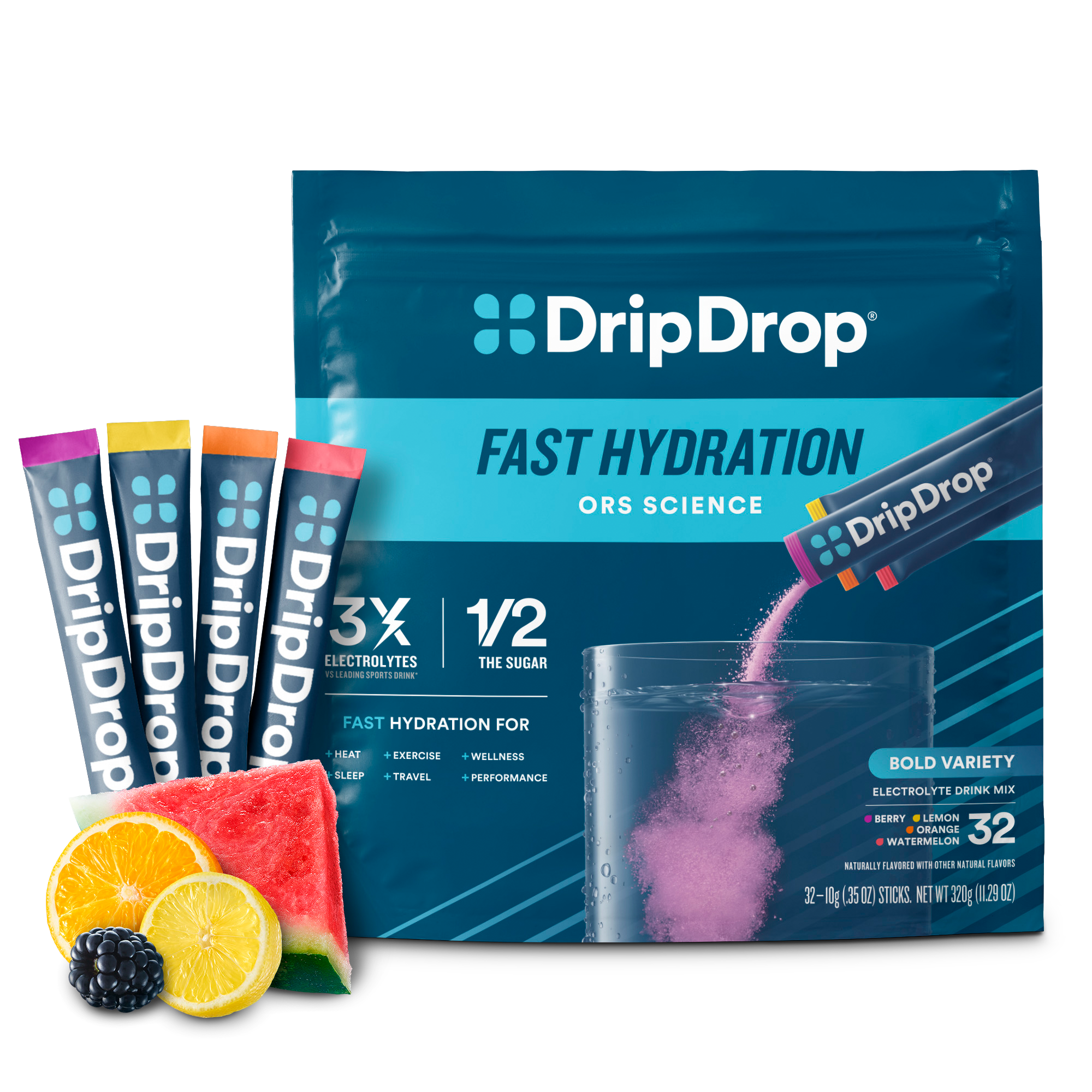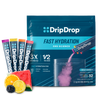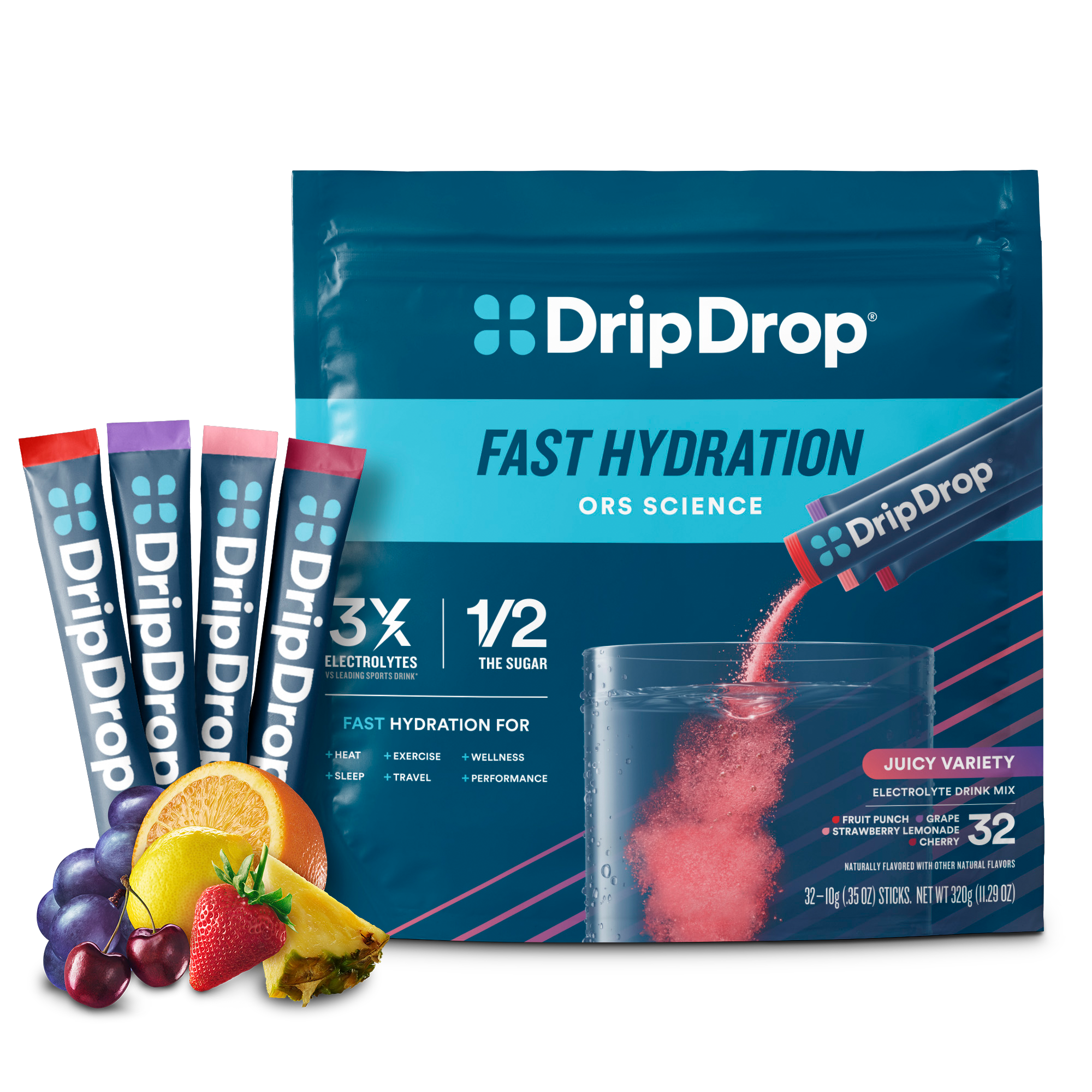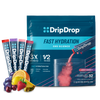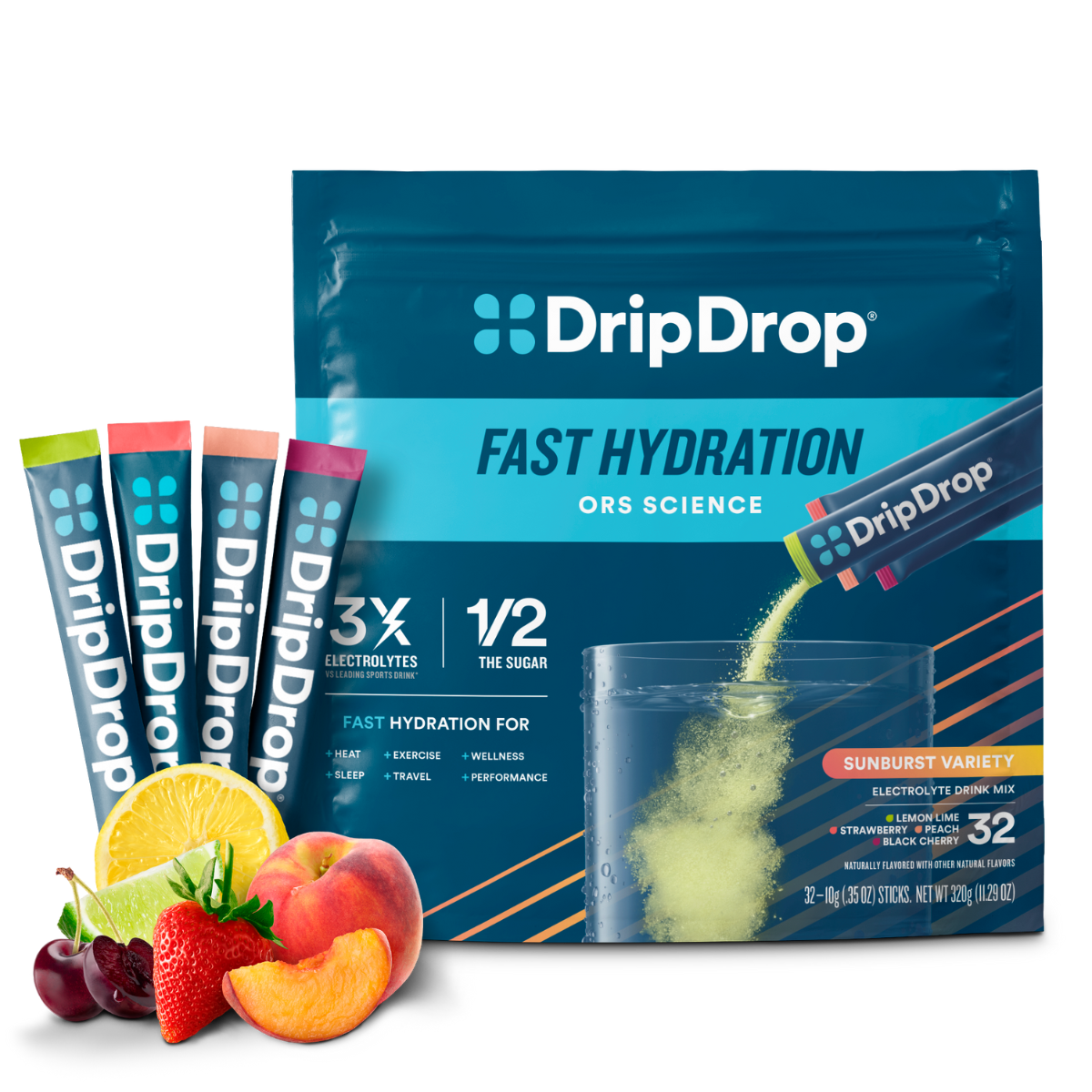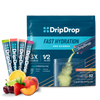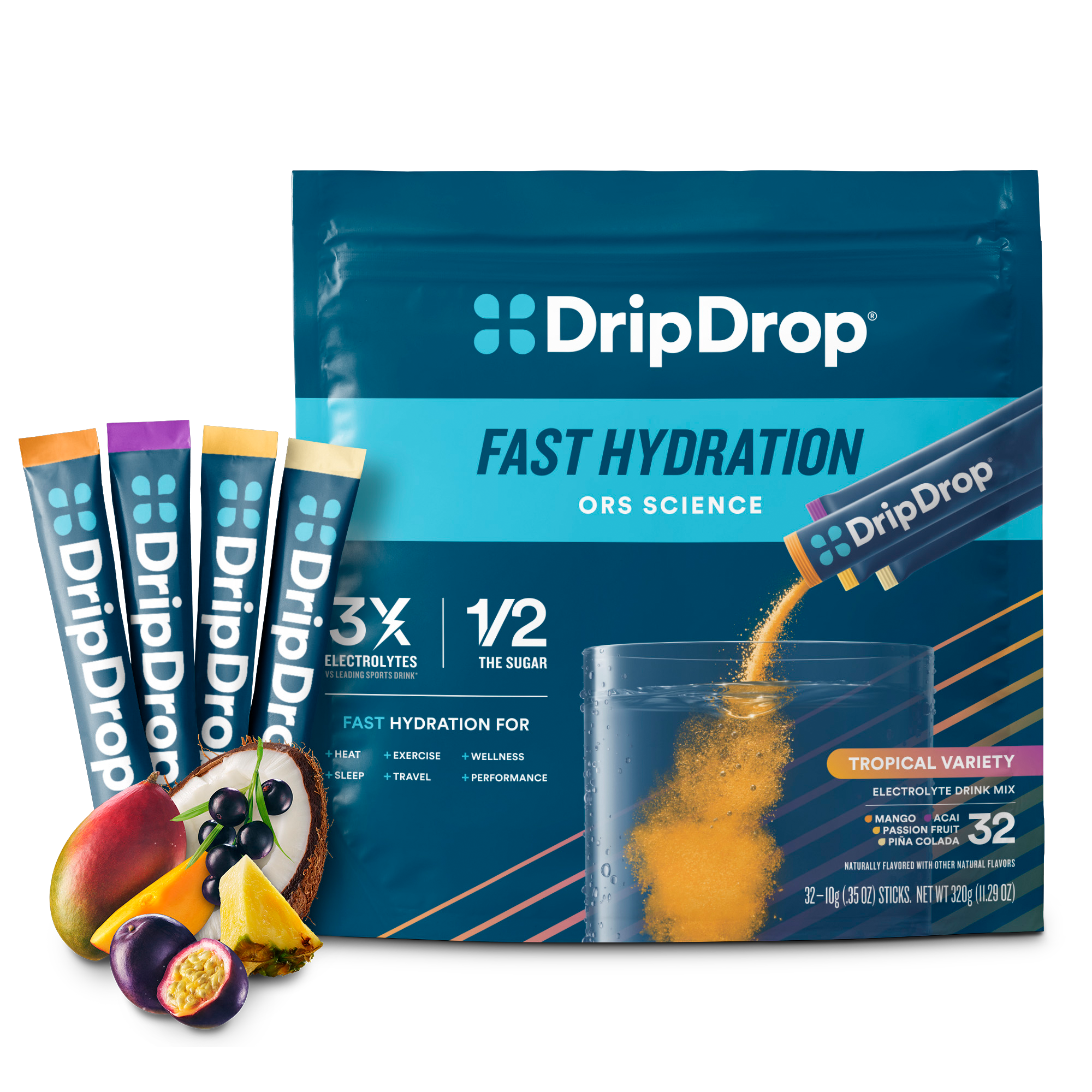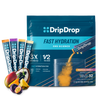If you’re active or you spend a lot of time outdoors, working or exercising, you’ve likely heard about electrolytes. But many people don’t realize just how important they are or what exactly they do for the body. You may be surprised to learn that electrolytes include common vitamins and minerals you hear about every day, including potassium, sodium, and calcium. These compounds play a key role in essential processes.
Whether you’re a professional athlete training for a competition, an EMT working long hours, or an everyday person on the go, we all need electrolytes to function at our best. When your body doesn’t get enough electrolytes, you may experience headaches, brain fog, and other symptoms.
Electrolyte drinks can help hydrate you while providing essential electrolytes that can restore balance. This guide dives into what electrolytes are, how to get enough, and how to stay hydrated no matter the situation.
What Are Electrolytes and Why Do We Need Them?
Electrolytes are vitamins and minerals that carry an electrical charge and play a significant role in nearly every bodily function. Common electrolytes include sodium, potassium, calcium, bicarbonate, magnesium, phosphate, and chloride.
The human body relies on these essential elements to carry out processes from nerve and muscle function to fluid balance and blood pressure regulation. However, a precise balance is required to conduct these tasks. When even one type of electrolyte level is off, it can cause an electrolyte imbalance, leading to symptoms including dizziness, nausea, headaches, and muscle weakness. More severe causes of electrolyte imbalances can lead to fainting or even organ failure.
If you suspect you’re severely dehydrated or your electrolytes are significantly out of balance, seek medical attention right away.
You may experience changes in overall electrolyte levels, or you may have changes in just one or two—low potassium or calcium levels, for example. Even small changes in electrolyte levels can dramatically change your body’s ability to function correctly.
Here are some of the main functions of electrolytes:
-
Maintaining normal fluid balance in the bloodstream
-
Transmitting signals from nerve endings in muscles, cells, and the heart to the nervous system
-
Supporting a normal heart rhythm
-
Regulating a normal, slightly alkaline blood pH level
-
Forming new tissue
-
Helping blood to clot
-
Enabling muscle contractions
-
Transporting waste and fluids in and out of cells
Low Electrolyte Symptoms
Symptoms of an electrolyte imbalance are often similar to those of dehydration. Dehydration occurs when your body loses more fluid than it takes in. This can occur through sweating, urination, vomiting, diarrhea, and breathing. Though dehydration and low electrolytes don’t always go hand in hand, they are often related.
When we lose water, we also lose electrolytes. If the water and electrolytes are not replaced, we start to experience symptoms, including:
-
Muscle weakness
-
Muscle cramps
-
Headaches
-
Brain fog
-
Nausea
-
Fluid retention
-
Sunken eyes
-
Confusion
-
Constipation
If you experience more severe symptoms, including rapid heart rate or chest pain, it’s essential to seek medical attention.
Once you notice symptoms of an electrolyte imbalance, you need a way to replenish the lost electrolytes fast. DripDrop’s precise formula activates a hydration shortcut that allows your body to absorb water and electrolytes faster than plain water. Add this electrolyte drink to your water for fast hydration, or keep DripDrop with you on the go to stay hydrated all day.
What Causes Low Electrolyte Levels?
Numerous factors can contribute to low electrolyte levels, including dehydration. Here are some common causes of low electrolyte levels:
-
Illness or sickness that causes diarrhea or vomiting
-
Excessive sweating
-
Intense exercise or working in extreme conditions
-
illnesses, including heat exhaustion and heat stroke
-
Certain medications, including diuretics and laxatives
-
Medical conditions such as diabetes, kidney disease, and cystic fibrosis
-
Medical problems, including rhabdomyolysis, which causes muscle weakness and breakdown that can harm kidney function
-
Not drinking enough fluids or getting proper nutrition
The Connection Between Hydration and Electrolytes
Electrolytes and hydration go hand-in-hand because many electrolytes play a significant role in fluid balance, ensuring your body is properly hydrated. Nearly every bodily process requires water, so fluid balance is essential to keep all systems functioning accordingly. The reciprocal relationship between hydration and electrolytes demonstrates the importance of consuming enough water and necessary vitamins and minerals.
Electrolyte drinks offer a quick, simple solution, providing fluids and vital electrolytes. DripDrop’s doctor-developed formula is designed to activate a hydration shortcut. The precise ratio of sodium to glucose allows the body to absorb water and electrolytes quicker than plain water. You don’t need to be dehydrated to have an electrolyte drink. DripDrop can preemptively help boost electrolyte and fluid levels. But if you are experiencing mild to moderate dehydration, DripDrop can rehydrate you fast.
Replace Lost Electrolytes With DripDrop
Avoid electrolyte loss simply by staying hydrated and planning. Hydrating is even more important when you’re in an environment that causes increased fluid loss, for example, when exercising or working in the heat. When exposed to high temperatures, take regular breaks in the shade to avoid overheating. In both warm and cold weather, donning moisture-wicking clothing helps pull sweat away from your skin.
The most important method to avoid low electrolyte levels is to consistently drink water and consume electrolytes throughout the day. Electrolytes can also be obtained from nutrient-rich foods and electrolyte drinks.
You can add electrolytes to water in numerous ways, but electrolyte drinks are the most effective way to nourish your body with the right levels of nutrients. Hydration beverages like DripDrop are specifically formulated to provide the electrolytes you need to overcome mild to moderate dehydration and keep your body functioning at its best.
DripDrop includes three times more electrolytes vs the leading sports drink and just half the sugar. If you’re looking for a sugar-free electrolyte drink, DripDrop Zero offers all the same hydrating benefits and delicious taste—without the sugar.



